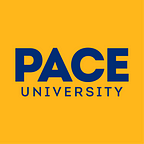Inequities of American Education Exposed
Almost from the beginning of compulsory education, American schools have provided food for its students. Now in the absence of physical schools, the needs schools fulfill that, as a society, we’ve come to rely upon are laid bare.
By Christine Clayton, EdD
Associate Professor of Education, Pace University
Just before my second online class of the week, I took a break midday to walk to my daughter’s local middle school to help distribute food to families of children who receive free and reduced meals. Across our country and on an unimaginable scale in places like New York City, schools are distributing this most essential need — food. It’s a startling thing to think about, even though it’s happened every day, for decades. The pandemic has exposed the inequities of America that have been there all along.
Almost from the beginning of compulsory education, American schools have provided food for its students. As reformer Robert Hunter wrote in 1904 in Poverty (PDF), “If it is a matter of principle in democratic America that every child shall be given a certain amount of instruction, let us render it possible for them to receive it…by making full and adequate provision for the physical needs of the children who come from the homes of poverty.”
Democracy can’t much function if the population is hungry and neither can schools work well if the students haven’t had breakfast. So, as in many things and over time, schools have stepped up to fill the gap.
Now in the absence of physical schools, the needs schools fulfill that, as a society, we’ve come to rely upon are laid bare. In addition to educating the hearts and minds of our nation’s school children, they ease the household budgets of millions of families by filling the bellies of the children during the week. Compulsory attendance enables parents to go to work and power the economy, build our roads, protect our communities, and heal our sick. Schools provide opportunities for students to pursue the arts, sports, and a variety of activities that make life worth living for so many. As schools at all levels — from kindergarten to graduate school — rapidly transition to distance learning, we see in sharp relief the technological divides of our communities as schools loan out computers and groups scramble to fund raise for free internet service for needy families. Our college students, now at home, report sharing computers with siblings. Some will have time and space to study and do their online coursework; others are living in cramped quarters and working increased hours to support economically distressed families. The contexts of our students’ lives are fundamentally different and those contexts for learning matter.
Much has been expected of an under-funded public education system to make up for the inequities of the American economy, and higher education has long been seen as a pathway to fulfill one’s American dream for financial success, security, and fulfillment. In this moment of crisis, we cannot fail to see the inequities of that system any longer.
